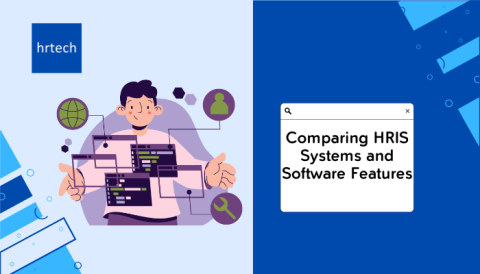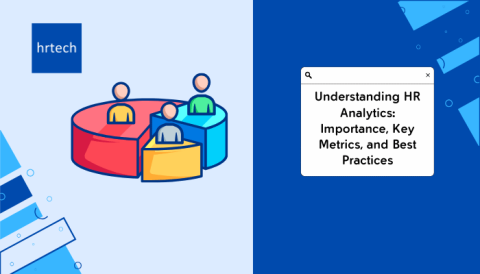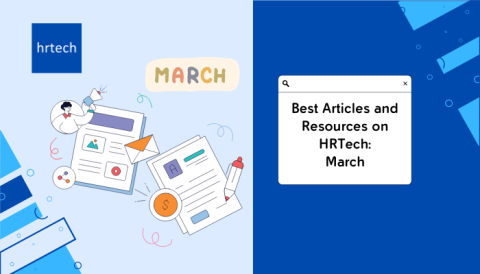The winds of change are sweeping through the world of work, and remote work is rapidly becoming the norm. HR professionals are at the forefront of this transformation, and hrtech is committed to keeping you informed about the latest trends and strategies.
Today, we’ll examine the innovative remote work model implemented by Rhino, a company that’s leading the charge in this exciting new landscape.
Our exploration begins with insights from Claire Babbage, a renowned HR expert. Babbage emphasizes the significant impact of remote work on HR strategy. She argues that companies must adapt and embrace remote models to remain competitive in today’s talent-driven market.
Taking these words to heart, Rhino has made a bold move by transitioning to a permanent remote work model. This forward-thinking approach reflects a company that prioritizes flexibility and recognizes the vast potential of a global talent pool. But what exactly does this model entail, and how does it benefit both Rhino and its employees?
Stay tuned as we delve deeper into Rhino’s remote work strategy, exploring the key considerations, strategies for fostering engagement, and the unique challenges and opportunities of this dynamic work environment.
Unlocking the Potential- Key Considerations for Remote Work:

Embracing a remote work model presents exciting opportunities, but it also requires careful planning and strategic implementation. Let’s explore some key considerations that Rhino, and any company considering a remote work model, should prioritize:
Global Talent Pool: Gone are the days of being limited by geographical boundaries. Remote work opens the door to a world of talented individuals. Companies like Rhino can now tap into a diverse pool of experts, fostering a richer and more innovative work environment.
Competitive Location-Agnostic Compensation: Traditional compensation strategies need to evolve in a remote setting. Location-agnostic compensation ensures employees are paid competitively, regardless of their physical location. This attracts top talent and promotes fairness and equity within the organization.
Employee Preference for Flexibility: Numerous studies have shown a clear preference for flexible work arrangements among today’s workforce. Remote work allows for a better work-life balance, increased productivity, and overall employee satisfaction. By embracing remote work, companies can cater to this growing employee desire and improve overall talent retention.
Bridging the Distance- Employee Engagement in a Remote Setting:
The physical separation inherent in remote work can pose a challenge for maintaining engagement and connection within your team. However, with the right strategies in place, you can foster a thriving remote work environment where employees feel valued, motivated, and connected.
Here, we’ll explore how Rhino tackles this challenge, focusing on the importance of intentional connection and enabling meaningful contributions:
Intentional Connection: While video calls and virtual meetings are essential, fostering a sense of community goes beyond just technology. Rhino prioritizes “intentional connection” by encouraging virtual coffee breaks, team-building activities, and regular check-ins. This approach helps to build rapport, fosters a sense of belonging, and combats feelings of isolation that can sometimes arise in remote teams.
Meaningful Contributions: Employees who feel their work matters are more likely to be engaged and productive. Rhino empowers their remote team by providing clear goals, regular feedback mechanisms, and opportunities to make significant contributions. This can involve involving team members in decision-making processes, assigning them challenging projects, and recognizing their big and small achievements.
By prioritizing intentional connection and creating a space for meaningful contributions, companies can cultivate a remote work environment where employees feel valued and invested in the organization’s success.
Building a Support System- Feedback and Remote Employee Wellbeing:
Maintaining a happy and healthy remote workforce goes beyond simply having a good communication strategy. Here’s how Rhino prioritizes feedback and support to ensure their remote employees thrive:
Leveraging Feedback: Effective communication is a two-way street. Gathering qualitative feedback through surveys and informal check-ins allows Rhino to gain valuable insights into the needs and challenges faced by their remote team. This feedback is then used to continuously refine their remote work strategy and ensure it meets the evolving needs of the employees. Additionally, formal engagement surveys provide a broader picture of overall employee satisfaction and help identify areas for improvement.
Mental Health and Wellness: Feeling isolated can have a significant impact on mental well-being. Rhino recognizes this and actively supports the mental health of their remote workforce. They offer resources such as access to mental health professionals and wellness programs that promote healthy habits and stress management techniques. Furthermore, promoting healthy work-life boundaries and encouraging breaks throughout the workday is crucial for preventing burnout and fostering a sustainable remote work environment.
By prioritizing feedback and creating a culture of support that addresses mental health and wellness, Rhino demonstrates their commitment to the well-being of their remote team.
Transforming HR through Agile Workforce Solutions.
Embracing the Adventure- Challenges and Opportunities in Remote Work:

Remote work isn’t a one-size-fits-all solution. It comes with its own set of challenges and opportunities, both for companies and employees. Here, we’ll explore how Rhino tackles both sides of the coin:
Independent Success: Remote work thrives on an environment where employees can excel autonomously. Rhino equips their team with the necessary tools and training to promote independent success.This empowers individuals to take ownership of their projects, manage their time effectively, and foster a culture of self-reliance. It’s important to remember that successful remote work isn’t just about having the technical skills; it also requires strong communication, time management, and self-motivation abilities.
Remote Fun: Maintaining morale and fostering connection in a remote setting requires creativity. Rhino goes beyond the traditional work model to organize fun and engaging activities for their team. These activities can be virtual team-building exercises, online games nights, or even sending care packages to boost morale and create a sense of camaraderie. By injecting some fun into the workday, Rhino demonstrates that remote work doesn’t have to be isolating and can foster a positive and collaborative work environment.
Preparing for 2024- HR Trends Shaping the Future of Work:
The world of work is constantly evolving, and 2024 promises to be a year of exciting developments in HR strategy. We’ll delve into three key trends that will shape HR practices in the coming year:
1. Embracing AI and Personalized Benefits in HR Strategy
Artificial intelligence (AI) is rapidly transforming the HR landscape. But how can you leverage this powerful tool to create a more effective and engaging work environment? Let’s explore
AI’s Role in Recruitment, Retention, and Engagement: AI algorithms can analyze vast amounts of data to identify top talent, predict employee turnover, and personalize employee experiences. This allows HR professionals to focus on strategic initiatives while ensuring a smooth and efficient talent management process.
Employee Wellness and Connection to Mission: A happy and healthy workforce is a productive one. In 2024, we’ll see a stronger emphasis on employee wellness programs, with AI potentially playing a role in identifying stress levels and recommending personalized well-being resources. Additionally, AI can be used to personalize communication and connect employees to the organization’s mission, fostering a stronger sense of purpose and belonging.
2. Anticipated Trends in HR Strategy for 2024
Here are some specific trends we expect to see gain traction in 2024 HR strategy:
Focus on AI and Employee Engagement: AI isn’t just about automation; it can also be a powerful tool for boosting employee engagement. Imagine chatbots that answer routine questions, freeing up HR professionals to focus on career development initiatives and personalized employee interactions.
AI for Administrative Tasks and CRM Automation: Streamlining administrative tasks like scheduling and data entry allows HR professionals to dedicate more time to strategic initiatives and building relationships with employees. AI-powered CRM (Customer Relationship Management) systems can also personalize the recruitment process and improve candidate experience.
3. Personalization and Financial Wellness in Employee Benefits
Gone are the days of one-size-fits-all benefits packages. In 2024, we expect to see a rise in personalized benefit options:
Tailoring Benefits to Individual Life Cycle Events: Providing benefits that cater to different life stages, such as student loan repayment assistance for young employees or elder care support for those nearing retirement, demonstrates a commitment to employee well-being and can significantly boost morale.
Addressing Immediate Financial Needs: Financial stress can significantly impact employee well-being and productivity. In 2024, we may see a rise in “financial wellness” programs that include access to financial literacy resources, emergency loan options, and even financial counseling services.
Half of Frontline Workers Feel Expendable:
The backbone of any successful organization is its frontline workforce. The cashiers, nurses, customer service representatives, and countless others interact directly with customers and keep the daily operations running smoothly.
Yet, a recent study by O.C. Tanner’s 2024 Global Culture Report reveals a troubling trend: half of all frontline workers feel expendable by their employers. This highlights a significant disconnect that can seriously affect employee morale and business performance.
Disparity Gap- Access and Enablement:
The report illuminates a key disparity between frontline workers and their corporate counterparts: access and enablement. Corporate employees often enjoy greater access to resources, development opportunities, and a sense of belonging within the organization.
Frontline workers, on the other hand, may feel left out, lacking the tools and support they need to succeed and grow in their roles.
This lack of access and enablement has a real impact. Studies have shown that employees who feel valued and empowered are likelier to stay with their companies and perform at a higher level.
When frontline workers feel expendable, they become disengaged and less productive. This can lead to higher turnover rates, which can be incredibly costly for businesses.
Addressing the Needs of Frontline Workers:
So, what can be done to bridge this gap and create a more positive work environment for frontline employees? Here are a few key strategies:
Equitable Flexibility: Frontline workers often have less flexible schedules than their corporate counterparts. Offering options for flexible work arrangements, such as shift swaps or compressed workweeks, can go a long way in improving morale and reducing feelings of isolation.
Connection, Belonging, and Fulfillment: Frontline workers crave the same sense of connection, belonging, and fulfillment as any other employee. HR initiatives can focus on building a strong company culture that recognizes and appreciates the contributions of frontline staff.
This can involve creating opportunities for social interaction among frontline workers, providing regular feedback and recognition, and offering career development opportunities that are relevant to their roles.
Investing in Your Frontline:
Organizations can create a more engaged and productive workforce by addressing the needs of frontline workers and bridging the access and enablement gap. Remember, a happy and valued frontline team is a powerful asset to any business.
What can you do?
Share this article with your network to raise awareness about the challenges faced by frontline workers.
If you’re an HR professional, consider implementing some of the strategies mentioned above to improve the work experience for your frontline employees.
Let’s work together to create a work environment where all employees feel valued and appreciated regardless of their position.





